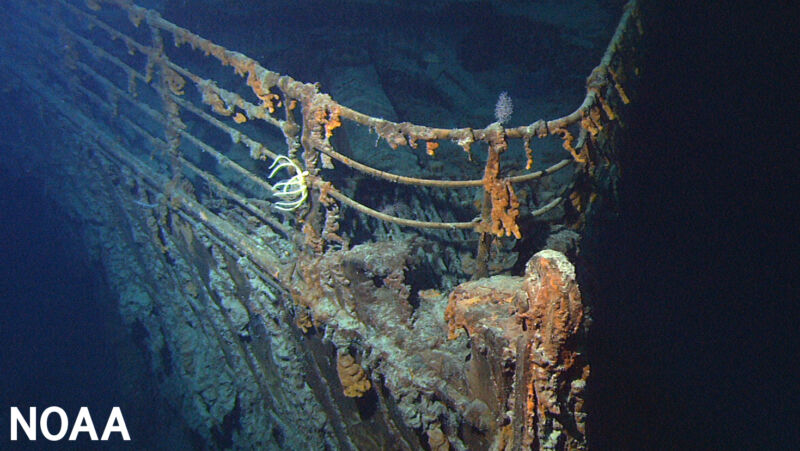
Was that surprisingly fast or excruciatingly slow? The search to discover the fate of the Titan submersible took place against a backdrop of hopes for survival and dwindling oxygen supplies. Given that, the time it took to confirm the fate of those on board may have seemed excruciatingly slow.
At the same time, the extreme depths of the Titanic’s wreck posed a lot of challenges, and it’s extremely difficult to find anything on the ocean’s bottom if you don’t know exactly where to look. From that perspective, the successful conclusion of the search can be viewed as happening remarkably quickly.
A complex site
One of the factors that took time was simply getting the right hardware to the right location. There aren’t a lot of remotely operated vehicles that are built to withstand the pressures found at over 3,500 meters deep in the ocean. Not all of those vehicles will have the right equipment to handle the search, and some of the ones that do will be in use elsewhere. Any equipment that was appropriate and available would then have to get sent to Canada, put on board an appropriate vessel, and then taken several hundred miles off the coast to the site of the Titanic. And then it would have to descend to the wreck site.
There is also the matter of the search area. Subs that visit the area are supposed to dump the ballast they need for a fast descent in one of two areas away from debris from the Titanic. Once that’s done, they can continue on to the wreck—or at least part of the wreck. The Titanic split in half and spewed a lot of its contents before settling on the bottom. The two primary pieces of the Titanic are obvious destinations and are separated by over half a kilometer. But there are many pieces ranging in size from individual artifacts to the ship’s boilers, some of which might be of interest to visitors, scattered over an area that’s estimated at 5 square kilometers.
Given the uncertainties about the fate of the Titan submersible, there was no way of knowing where in this area it might have ended up. Prioritizing which parts of the site to search would have been a challenge, and one that would have the risk of overlooking the Titan if it wasn’t near the two main halves of the wreck.
As it turns out, the search was narrowed before it even began. According to reports on Thursday, the sound of the Titan’s implosion had been picked up by the US Navy, which maintains devices for tracking submarines in the Atlantic. As a result, the Navy was able to provide a rough indication of where to focus the search. Even so, the submersible’s debris was nearly half a kilometer away from the bow section. Which may not sound like it’s very far, but you have to consider how hard it is to spot anything at those depths.
>>> Read full article>>>
Copyright for syndicated content belongs to the linked Source : Ars Technica – https://arstechnica.com/?p=1949670















![[News] Japan Develops 10nm Nanoimprint Technology, with Potential to Tackle EUV Bottleneck – TrendForce](https://earth-news.info/wp-content/uploads/2025/12/329851-news-japan-develops-10nm-nanoimprint-technology-with-potential-to-tackle-euv-bottleneck-trendforce-360x180.jpg)















